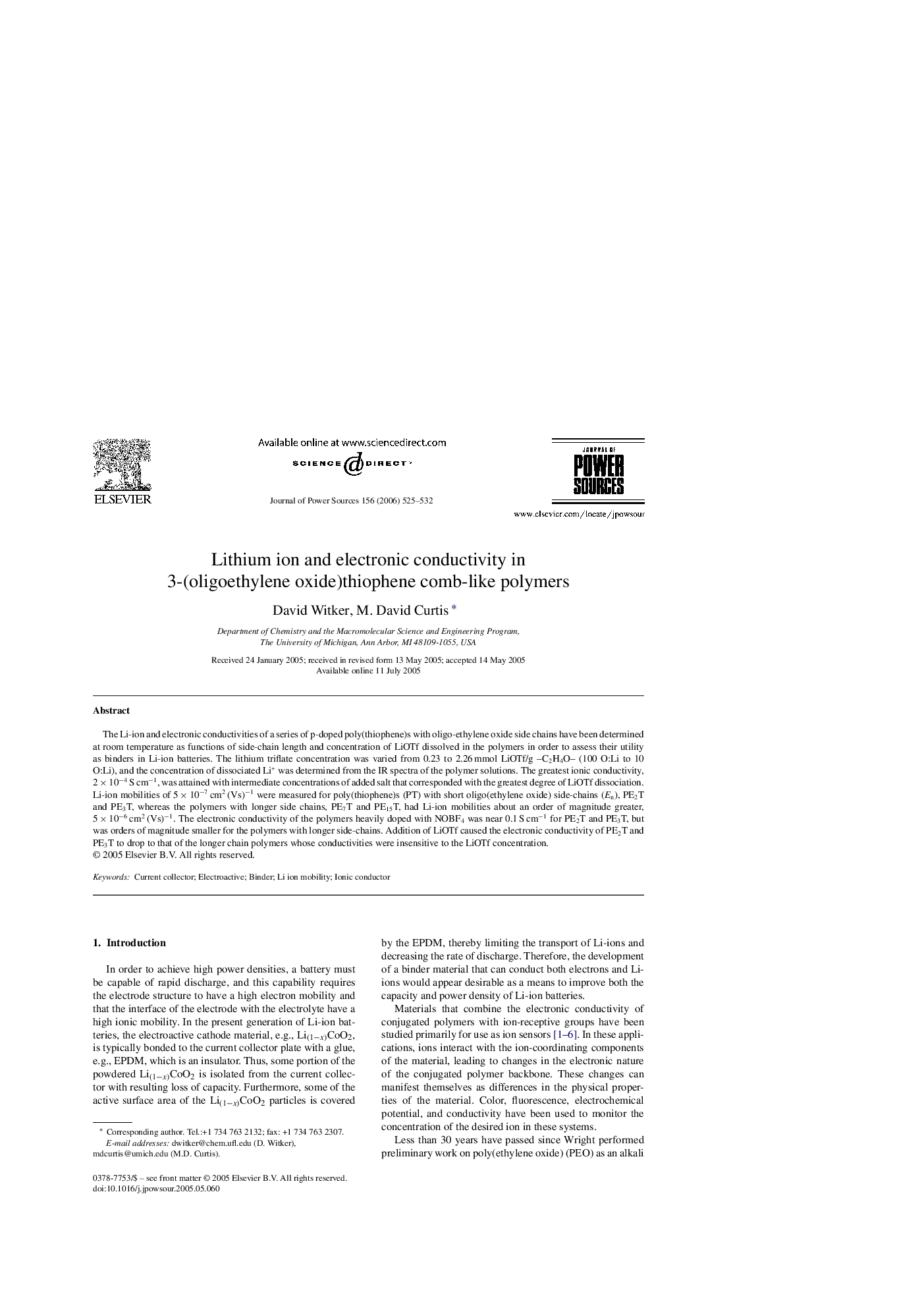| Article ID | Journal | Published Year | Pages | File Type |
|---|---|---|---|---|
| 1295057 | Journal of Power Sources | 2006 | 8 Pages |
The Li-ion and electronic conductivities of a series of p-doped poly(thiophene)s with oligo-ethylene oxide side chains have been determined at room temperature as functions of side-chain length and concentration of LiOTf dissolved in the polymers in order to assess their utility as binders in Li-ion batteries. The lithium triflate concentration was varied from 0.23 to 2.26 mmol LiOTf/g –C2H4O– (100 O:Li to 10 O:Li), and the concentration of dissociated Li+ was determined from the IR spectra of the polymer solutions. The greatest ionic conductivity, 2 × 10−4 S cm−1, was attained with intermediate concentrations of added salt that corresponded with the greatest degree of LiOTf dissociation. Li-ion mobilities of 5 × 10−7 cm2 (Vs)−1 were measured for poly(thiophene)s (PT) with short oligo(ethylene oxide) side-chains (En), PE2T and PE3T, whereas the polymers with longer side chains, PE7T and PE15T, had Li-ion mobilities about an order of magnitude greater, 5 × 10−6 cm2 (Vs)−1. The electronic conductivity of the polymers heavily doped with NOBF4 was near 0.1 S cm−1 for PE2T and PE3T, but was orders of magnitude smaller for the polymers with longer side-chains. Addition of LiOTf caused the electronic conductivity of PE2T and PE3T to drop to that of the longer chain polymers whose conductivities were insensitive to the LiOTf concentration.
Graphical abstractComb-like P3ATs with oligoethylene side-chains have ionic conductivities (ca. 10−4 S cm−1) when doped with lithium triflate, but the addition of the salt decreases the electronic conductivity of the oxidized polymer from 0.1 to 10−6 S cm−1.Figure optionsDownload full-size imageDownload as PowerPoint slide
